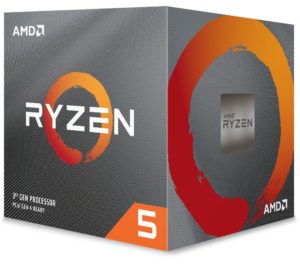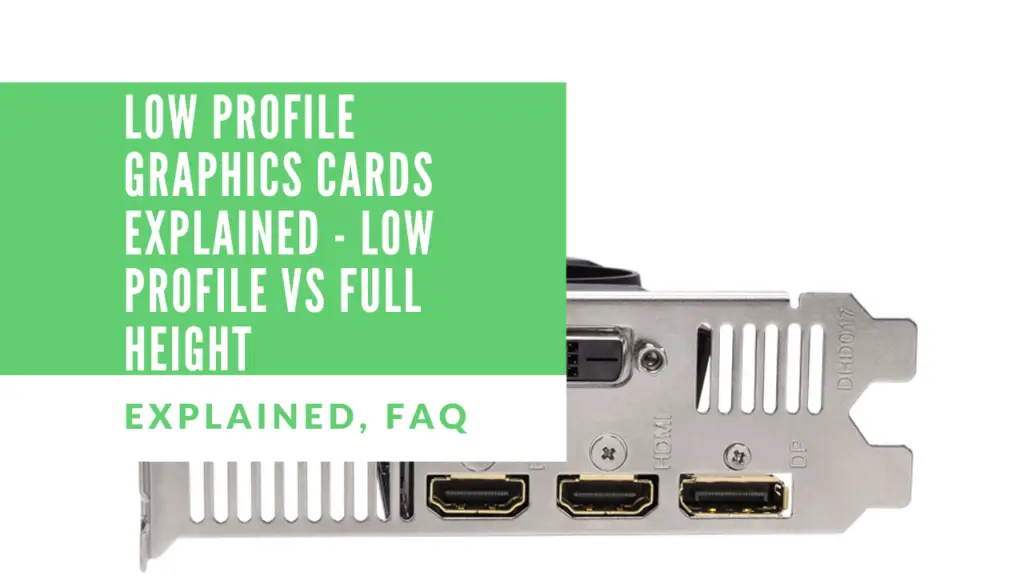How Much Video Memory Do You Need?
Graphics card memory, aka video memory, is a vital part of any graphics card and any computer. It allows for much better and complex graphics to be run on a computer.
Graphics card memory, also known as video memory is located on the graphics card’s pcb as IC. Like ram, video memory is only temporary storage and stores graphics data when needed and gets removed or overwritten when new data comes in. When a computer is turned off, the video memory does not store any data.
Having more video memory is useful as it can store more graphics data and therefore provide better texture quality and rendering. But how much video memory is enough in 2020?
Table of Contents
More Articles
How Much Video Memory Table
| Video Memory Amount | Recommended Reolutions | Recommended Quality Settings | Recommended Use |
|---|---|---|---|
| 1GB | 720p | low-med | Not really good for gaming. Good for less demanding games and older applications |
| 2GB | 720p | med | Also not very good for gaming. Can provide some good performance on older games and less demanding ones. Light applications work well |
| 3GB | 720p - 1080p | med-high | There are some good GPUs with 3GB memory like the 1060. Okay for gaming but nowadays you require more VRAM. |
| 4GB | 1080p | med-high-ultra | Games work well at 1080p. Might have to fine tune the options a bit. Mid range Gaming |
| 6GB | 1080p - 1440p | high-ultra | There are good GPUs with 6GB of memory. Some are more powerful than ones with 8GB. Mid - high end gaming. |
| 8GB | 1080p - 1440p | high-ultra | A lot of Gpus with 8GB of memory. Good at 1440p. High end gaming but depends on GPU. |
| 11GB+ | 2160p (4K) | ultra | Usually high end graphics cards capable of 4K gaming. High End Gaming with 4k. |
Video Memory

It’s important to note what Video Memory or VRAM is. Video memory is the memory used by a graphics card to store and retrieve graphics data from memory quickly. Like ram, it is volatile memory meaning it does not retain any data when switched off. The VRAM is only temporary storage used by the graphics card for quick access.
By using VRAM, a graphics card can access the memory a lot faster than if it were to use your normal desktop RAM. This is due to the fact that the video memory is located directly on the PCB as IC. This gives a fast bandwidth for data transfer.
Common VRAM types include the GDDR SDRAM series. This includes GDDR5, GDDR5x and the newest and most used nowadays GDDR6. Some companies (mainly AMD) have graphics cards using HBM2 memory. HBM2 uses stacked dies which provide a massive bandwidth. This makes them great for server and workstation use.
So we can see that VRAM is very important in graphics cards. But how much video ram do we need? Let’s find out in the next section.
How Much Video Memory Do You Need?

So, it’s no secret that more demanding games using higher settings and resolutions require more VRAM. The main question is what kind of games you want to play and at what quality?
The amount of VRAM used in a game depends on a few things:
- Your settings, including resolution and quality
- What’s going on within the scene such as more particles and polygons to render
- How much VRAM is available on your graphics cards – fragmentation can cause lots of smaller memory spaces which can’t be utilized
2GB Video Memory
2GB of video memory is not really enough for gaming these days. However, it will still work well with older and less demanding games at 720p and 1080p depending on the game. If you just plan on use light applications then 2GB of Video Memory is plenty.
4GB Video Memory
4GB of video memory is one that is quite common and is usually plenty for 1080p gaming at high and sometimes at ultra settings. Obviously it depends on your graphics cards capability to be able to get good frames in game.
Older cards such as the GTX 1050 Ti have 4GB of GDDR5 memory and perform quite well at 1080p
6GB Video Memory
6GB of video memory is also great for 1080p. Lots of graphics cards come with 6GB and we feel it is a good amount to have for an entry level graphics card. Sometimes you can even push the games up to 1440p but you may have to sacrifice some of the quality.
8GB Video Memory
8GB of video memory is a good amount which is very common to get. Graphics card such as the RTX 2070 have 8GB of GDDR6 memory. You can usually play 1440p games on this amount of memory with high to ultra settings depending on the game.
11GB+ Video Memory
Very high end cards tend to have more than 11GB. Otherwise most will have about 8GB. The RTX 2080 Ti has 11GB of GDDR6 memory and can play 4k games at high to ultra settings with upwards of 60 fps. This means if you are planning to play high end games at 4k, you should look for graphics cards with 11GB or more of memory.
Important Note about Video Memory
Video Memory is very similar to ram except it is for the GPU. So this means that just because you have a lot of VRAM, doesn’t mean that your games will play better. It also depends massively on the GPU that you have. You can have a lot of VRAM available but if your GPU can’t utilize it then there is not point in having more VRAM.
It’s the same story for the CPU. Having 64GB of ram with an intel celeron won’t make your PC that much better as the CPU won’t be able to make use of this extra ram.
APU Video Memory

AMD makes CPUs with integrated graphics called APUs. These graphics are built straight into the chip and therefore don’t usually have their own video memory. The APU uses your standard computer ram memory for its graphical processing.
This is why it is important to have decent, fast and high bandwidth memory (preferably in dual channel) memory when using an APU as you will see better performance.
If you plan on using an APU makes sure you get a decent amount of fast, desktop ram in dual channel.
Conclusion
There are many options when choosing how much VRAM for your graphics card. However, it’s important to note that your gpu performance is far more important than amount of VRAM.
For 1080p we recommend at least 4GB, 1440p 8GB and 11GB for 4k resolutions. Fine tuning the graphical settings in each game is also a great way to control how much VRAM will be used.




